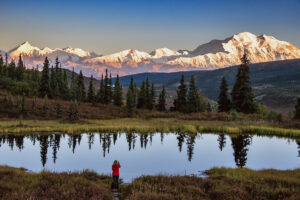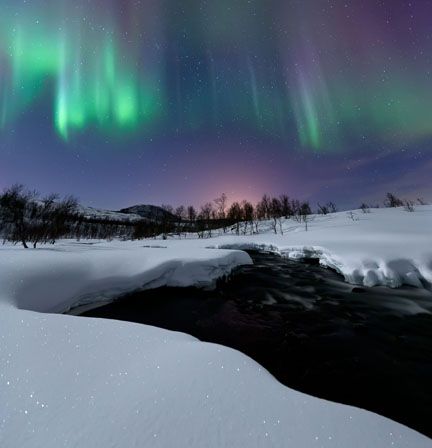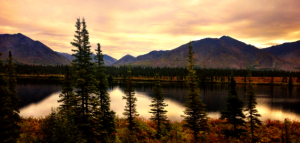
Alaska is renowned for its breathtaking natural landscapes, home to some of the most magnificent glaciers on Earth. These remnants of the last Ice Age are not only key attractions for visitors and locals but also vital components of the state’s ecosystem. Whether you’re planning a trip, or simply want to learn more about these natural wonders, this guide will provide you with everything you need to know about the glaciers of Alaska.
How many glaciers are in Alaska?
Determining the exact number of glaciers in Alaska is challenging due to varying definitions and counting methods. However, according to the National Park Service, there are an estimated 100,000 glaciers in Alaska, with only 616 officially named. This figure includes a wide range of glacier types, from small, unnamed glaciers to massive ice fields. As glaciers retreat and break into smaller pieces, the smaller bodies of ice become their own glaciers, contributing to the varying numbers.

Photo Credit: Matt Hague
What is the biggest glacier in Alaska?
The largest glacier in Alaska is the Bering Glacier, located in the southeastern part of the state, near the small town of Cordova. This colossal glacier spans 1,900 square miles and is more than 120 miles long, making it the largest glacier in North America. The Bering Glacier is notable not only for its size but also for its dynamic nature — it is constantly moving and changing. The glacier also has a relationship with seismic-activity in the region. As the glacier moves and retreats, it can induce earthquakes as it adjusts the load on the Earth’s crust.
What is unique about the glaciers in Alaska?
Alaska’s glaciers are unique for several reasons:
- Diversity: The glaciers in Alaska vary greatly in size, type and accessibility. From tidewater glaciers that calve icebergs into the sea to valley glaciers nestled in mountain ranges, the variety is staggering.
- Accessibility: Several of Alaska’s glaciers are relatively easy to visit with different tour options available, such as kayaking, boating, helicopter rides or hiking. For example, Mendenhall Glacier and Exit Glacier are great for hiking, while Hubbard Glacier is best seen by boat.
- Active Landscapes: The glaciers are constantly changing due to melting, calving and movement. This creates dramatic landscapes where visitors can witness geological processes in real time, seeing ice fall off and hearing the deep rumbles and splashes as it crashes into the water.
- Wildlife: Glacial environments in Alaska are home to diverse wildlife. Seals, sea otters and various bird species can often be seen around tidewater glaciers, while mountain goats and bears are common near inland glaciers.

Photo Credit: Mark Kelley
Are any Alaska glaciers growing?
While many of Alaska’s glaciers are retreating, there are a few that are actually advancing. One notable example is the Hubbard Glacier, located near Yakutat. It has been advancing for more than a century and continues to move toward the Gulf of Alaska. This massive glacier measures 76 miles long and seven miles wide at its terminus. With two large surges in the last 30 years, the Hubbard Glacier has significantly advanced during these periods. Most of the glacier’s bulk is underwater, but its face can be seen from cruise ships and boat tours. Despite its recent surges, the glacier has currently stopped surging, providing a more stable but still awe-inspiring sight for visitors.

Photo Credit: Brian Adams
Popular glaciers to see in Alaska
There is no shortage of glaciers to see in Alaska, but some are more easily accessible than others. Here are some of the most popular glaciers to see throughout the state.
Mendenhall Glacier
Located 13 miles from downtown Juneau, Mendenhall Glacier is one of Alaska’s most well-known glaciers. Visitors can explore the Mendenhall Glacier Visitor Center, which offers educational exhibits and stunning views of the glacier. Hiking trails such as the Nugget Falls Trail provide closer views of the glacier and the surrounding landscape.

Photo Credit: Mark Kelley
Hubbard Glacier
As mentioned previously, the Hubbard Glacier is notable for its advancing status. Located near Yakutat, this massive glacier can be seen from cruise ships and boat tours, offering a dramatic view of ice calving into Disenchantment Bay.
Exit Glacier
Part of Kenai Fjords National Park, Exit Glacier is one of the most accessible glaciers in Alaska. Visitors can drive to the trailhead and hike one of the well-maintained trails that leads to the glacier’s edge. The Harding Icefield Trail, a more challenging hike, offers expansive views of the glacier and the icefield it flows from.
Columbia Glacier
Located in Prince William Sound, the Columbia Glacier is one of the fastest-moving glaciers in Alaska. It has been retreating rapidly over the past few decades, creating a landscape filled with icebergs. Boat tours from Valdez offer an up-close look at the glacier and its calving face.

Photo Credit: Michael DeYoung
Glacier Bay National Park and Preserve
This park is home to several stunning tidewater glaciers, including the Marjerie Glacier. Visitors can explore the park via boat tours, which provide spectacular views of the glaciers and the abundant wildlife in the area. The park’s remote location and pristine environment make it a unique destination for glacier viewing.

Root Glacier
Located in Wrangell-St. Elias National Park, Root Glacier offers visitors a chance to hike directly on the glacier. The hike provides stunning views of the ice formations and the surrounding mountains. A tour with an experienced guide is recommended for safety.

Photo Credit: Ben Prescott
Matanuska Glacier
Just 100 miles northeast of Anchorage, the Matanuska Glacier is the perfect day trip for locals or visitors. The Matanuska Glacier State Recreation Site provides facilities and information for visitors as well as guided tours of the glacier.

Portage Glacier
Portage Glacier is a popular destination, located just over an hour south of Anchorage. Visitors can take a short cruise on Portage Lake to see the glacier up close. The nearby Begich, Boggs Visitor Center has exhibits and information about the glacier and the surrounding area.

Ruth Glacier
In Denali National Park, Ruth Glacier is famous for its dramatic setting within the Great Gorge, one of the deepest ravines in the world. Scenic flights over the glacier offer breathtaking views of the surrounding peaks and the glacier itself. Visitors can also opt for a glacier landing to see just how vast the gorge is.
Spencer Glacier
Accessible by train from Anchorage, Spencer Glacier is a popular destination for recreation. Visitors can take a train to reach the glacier and then explore it by hiking, kayaking or taking guided tours.

Photo Credit: Neal Alfano
Witnessing Alaska’s glaciers is a once-in-a-lifetime experience. The accessibility and diversity of these glaciers make Alaska a prime destination for anyone interested in exploring these icy giants. As you plan your Alaska adventure, consider staying with Westmark Hotels. Located in some of the most captivating destinations in the Land of the Midnight Sun, Westmark Hotels provide the perfect base for your glacier explorations.










